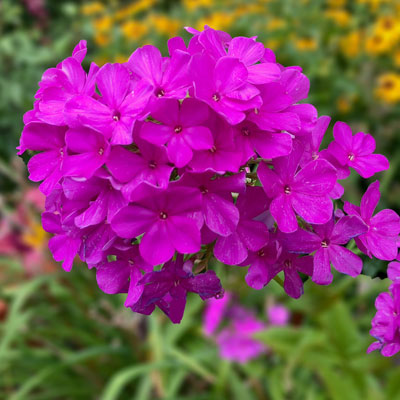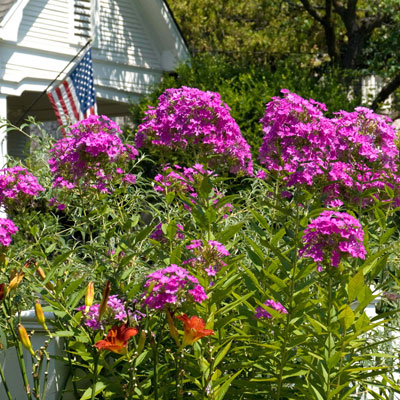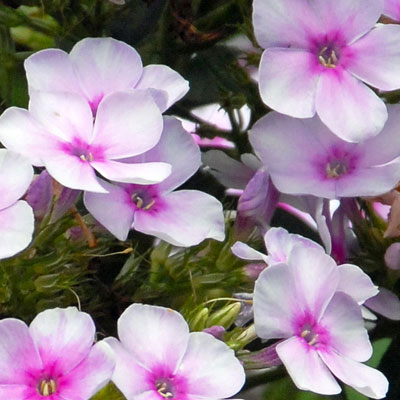Plant of the Week – June 21, 2018: Summer Phlox
I grew up in Texas, and I knew summer phlox as a popular shade-loving garden perennial. This deep pink variety is an old heirloom type that’s been around since our grandmothers’ gardens.

Summer phlox brightens its part of the garden.
When I transferred up to Ohio State and started visiting northern gardens I saw an entire new world of phlox in the summer. Rich reds and pinks and whites like I’d never known. They were stars of their surroundings.
Then we moved to North Texas (not quite the same as Northern Ohio), and I decided I’d try some of those same types in my gardens here, but that effort didn’t go so well. It seemed like they just weren’t happy with our hot summer weather. The only one that seemed to thrive was the old heirloom deep pink type like you see in my photo from earlier this week in McKinney.

Summer phlox stands tall above rest of garden perennials. This is an old heirloom planting. Greg Grant tells me that ‘Texas Pink’ and ‘Robert Poore’ are two adapted types found in the trade.
A new favorite phlox…
Jump ahead a few decades and our friend Greg Grant announced that he’d found a superior light pink type that not only survived our summers, but that also was resistant to powdery mildew, long the nemesis of summer phlox in general. Greg had chosen to name it in honor of his late friend the highly respected San Antonio nurseryman John Fanick.

John Fanick phlox found and named by Greg Grant some 20 years ago has become a Texas perennial garden favorite.
John Fanick summer phlox was distributed around the state and trialed in the Texas A&M research studies. It received superior marks and was soon named a Texas SuperStar® plant. It’s still very popular and frequently planted. You’ll be seeing it in bloom all across Texas in the next few weeks so keep your eyes open. Independent retail garden centers almost always offer it this time of the year.
To succeed with summer phlox…
• Start with one of these adapted selections.
• Prepare the planting bed using several inches of different types of organic matter and if you’re amending a clay soil, 1 inch of expanded shale.
• Plant in morning sun with afternoon shade.
• Keep plants moist at all times, but as much as possible keep water off foliage.
• Feed with high-nitrogen, slow-release fertilizer.
